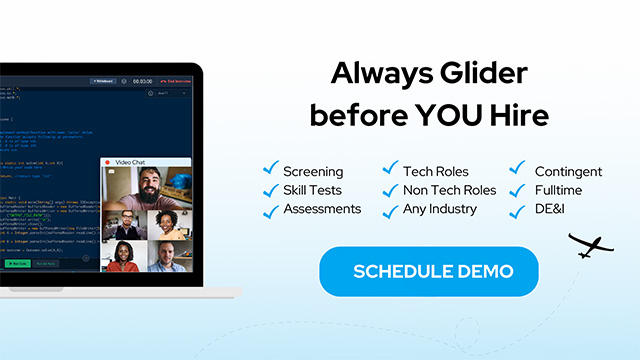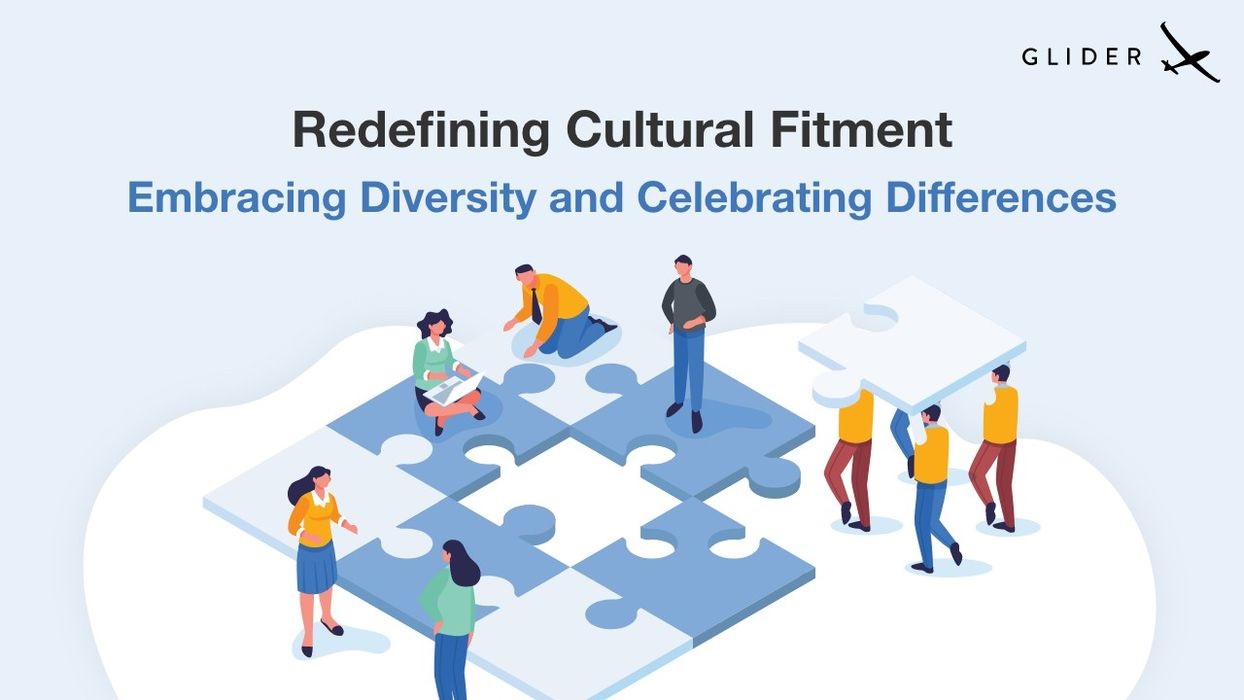
Modern-day HR makes one of the most fertile grounds for the successful application of trendy methodologies like technical screening. It’s where human professionals and smart technology (a lucky coupling indeed) work side by side to weed out unqualified candidates and equip companies with talented and skilled minds.
Is this combination of human insight and blunt technological accuracy a recipe for success when it comes to the assessment of technical candidates as well? Can you attract top applicants with technical screening? Couldn’t job-hungry developers simply use their coding gimmicks to ace the test by cheating? Or could it be that we expect so because we’re biased?
Here’s how our team at Glider.ai can help you solve this ticklish dilemma when it comes to technical screening.
Why do IT companies need technical screening? Presuming that all conscious bias has been removed from today’s screening process (these are better times for an all-inclusive approach, after all), employers and their HR teams have one more important battle to win. When push comes to shove, unconscious favoritism and bias still jeopardize fair hiring.
Consider gender, race, or pedigree, for instance.
Deceptive hints like brand names on candidates’ CVs or high-end university diplomas in their resumes speak just as little of potential employees’ attitudes and work ethics. And, let’s not forget that they can be equally misleading in terms of actual experience and expertise, or even completely plagiarised.
Unconscious bias is not always easy to detect and uproot, but it can be prevented with clearly defined job roles, a standardized assessment process that everyone’s got a shot at, consistent questions tailored to specific jobs, and most importantly of all, technological accuracy supported by hiring automation.
The first step is – eliminating the human factor.

What is technical screening in interview? Can you find top talent through technical screening process? Well, in order to evaluate every candidate fairly and without any unconscious prejudice towards their specific demographics and professional background, our team at Glider.ai uses sophisticated tools for technical analysis and screening, adaptive assessment, live candidate proctoring, and anti-plagiarism.
AI and machine learning reinforce the functionality of every tool, including technical screening.
Recruiting and hiring automation thus provides a comprehensive suite of tech solutions for any industry and niche, even though it’s been initially designed for technical candidates and developers. We make sure that there’s no bias or cheating, and guarantee a frictionless process with a happy end.

In terms of time and resources, screening is a brilliant method for discarding unsuitable candidates. And, since it completely depends on accuracy and impartiality, it is practically undoable without automation. This is especially important when you’re screening for tech roles that rely on hard skills.
By definition, technical screening method is applied when there are too many candidates to evaluate for a certain position. Its purpose is to help employers with recruitment and initial assessment, which is a long and arduous process that eliminates unfit candidates primarily by looking into their credentials.
Whether because there’s too little time to be thorough, or because screening data can be deceitful and therefore lead to bias, savvy employers now use AI-based candidate stacking and adaptive assessments that create comprehensive candidate profiles and select the best possible hire in no time.

Though there are practical ways to reduce hiring bias, the entire hiring process, from recruitment and candidate screening to technical analysis, assessment and interviewing, depends on the employer’s ability to stay impartial, but also on the candidate’s readiness to play a fair game. It is obvious that this is not always the case, as candidates often cheat.
So, how can you make sure developer candidates aren’t plagiarizing?
You can use the Moss system to check their coding tasks for plagiarism, but it won’t tell you why the codes are similar; you’d have to compare every single line yourself. The alternative is fairly recent but way more effective – instead of the task itself, it vets the candidates by monitoring them in real time.
Psychologically speaking, the practice of live proctoring and real-time assessment works as a scarecrow – if candidates who resort to cheating are aware of this system during the jobs search, they simply won’t apply. And, if they still do, there’s no chance that they’ll be able to bypass the system.

The assessment tools developed here at Glider use AI-based automation to make sure that eligible candidates are not discarded early on in the process due to unconscious bias. But that’s not all. They also monitor candidates while they’re working on their assignments, thus making cheating impossible.
Let’s also emphasize that all Glider tools are effortless to use and customize.
When it comes to live proctoring and assessment, our suite enables you to:
Verify the test takers’ identity- Ask candidates questions that only they can answer, and check their identity before the test.
Include a remote proctor to oversee the test- Developer tests can be supervised by a remote human proctor on an on-need basis.
Use AI algorithms to detect plagiarism- Employ AI-based plagiarism detection to double-check descriptive answers and code samples.
Gain insight into the candidate’s work process- Study the video to gain deeper insight into the candidate’s problem-solving process.
With every candidate being both monitored in real time and captured on video, every suspicious activity (googling answers, copy-pasting codes, consulting with a friend, or pausing for longer than usual) is immediately caught in the activity report for a recruiter to rewind and analyze after the test.
Not only does this help prevent plagiarism and eliminate candidates who cheat, but it also provides material evidence that can be dissected to detail by impartial recruiters. It helps maintain test integrity so that an eligible candidate gets judged not by their lack of skill, but by some other factors that promote favoritism.
Being susceptible to both bias and cheating, technical screening may just be the trickiest part of the hiring process. Use Glider to eliminate human error through the power of automation and AI and to monitor your technical candidates at the same time. Assess what they know – not who they are.



